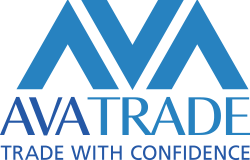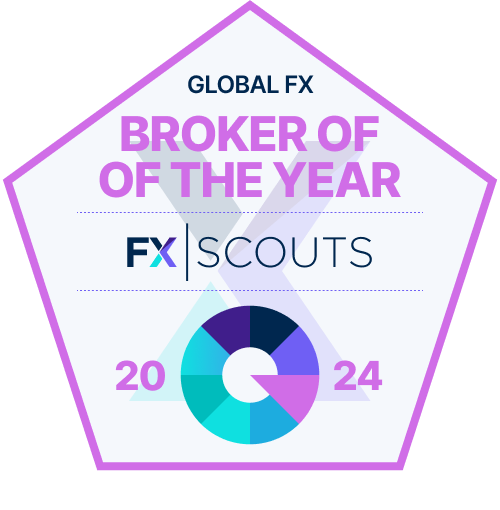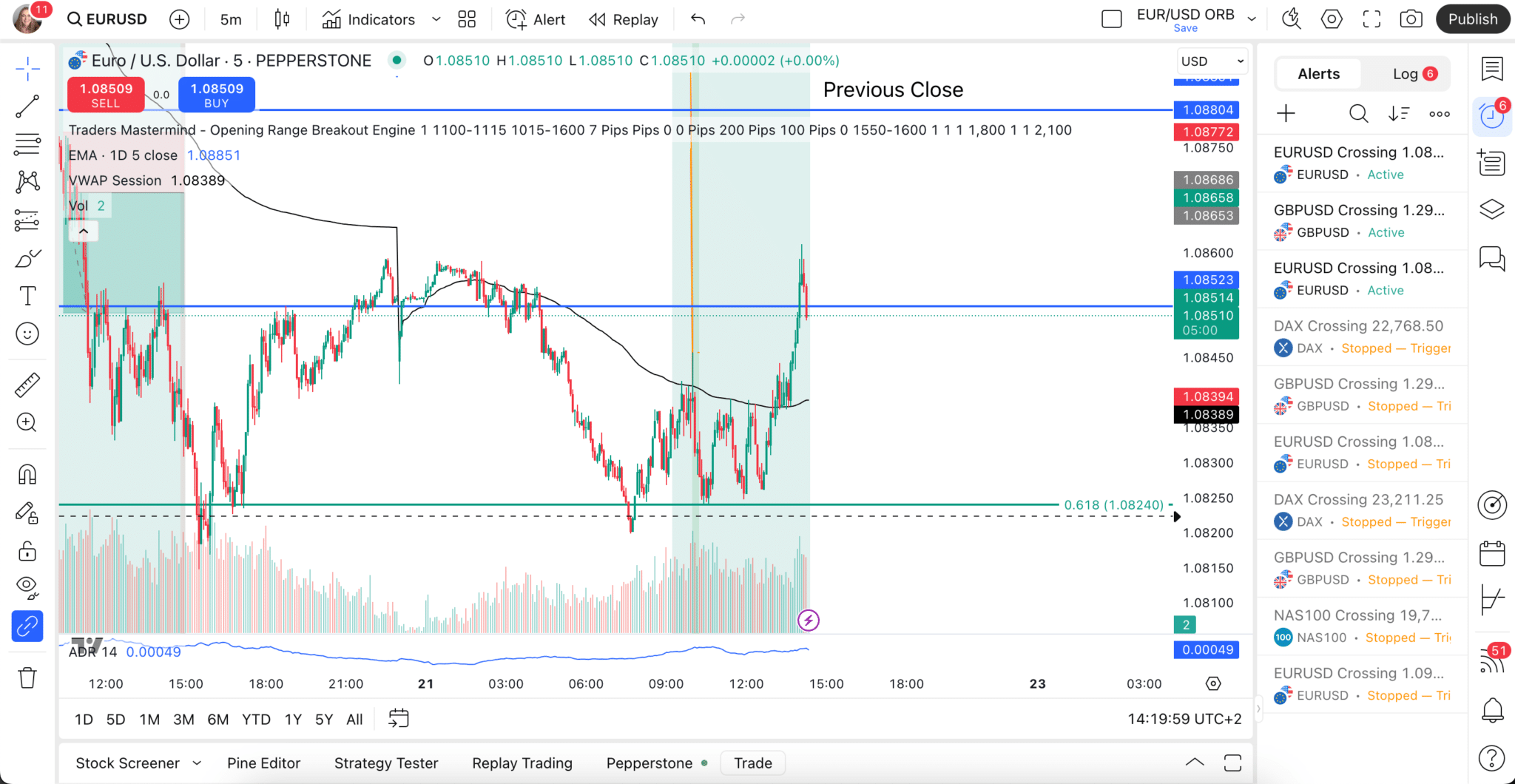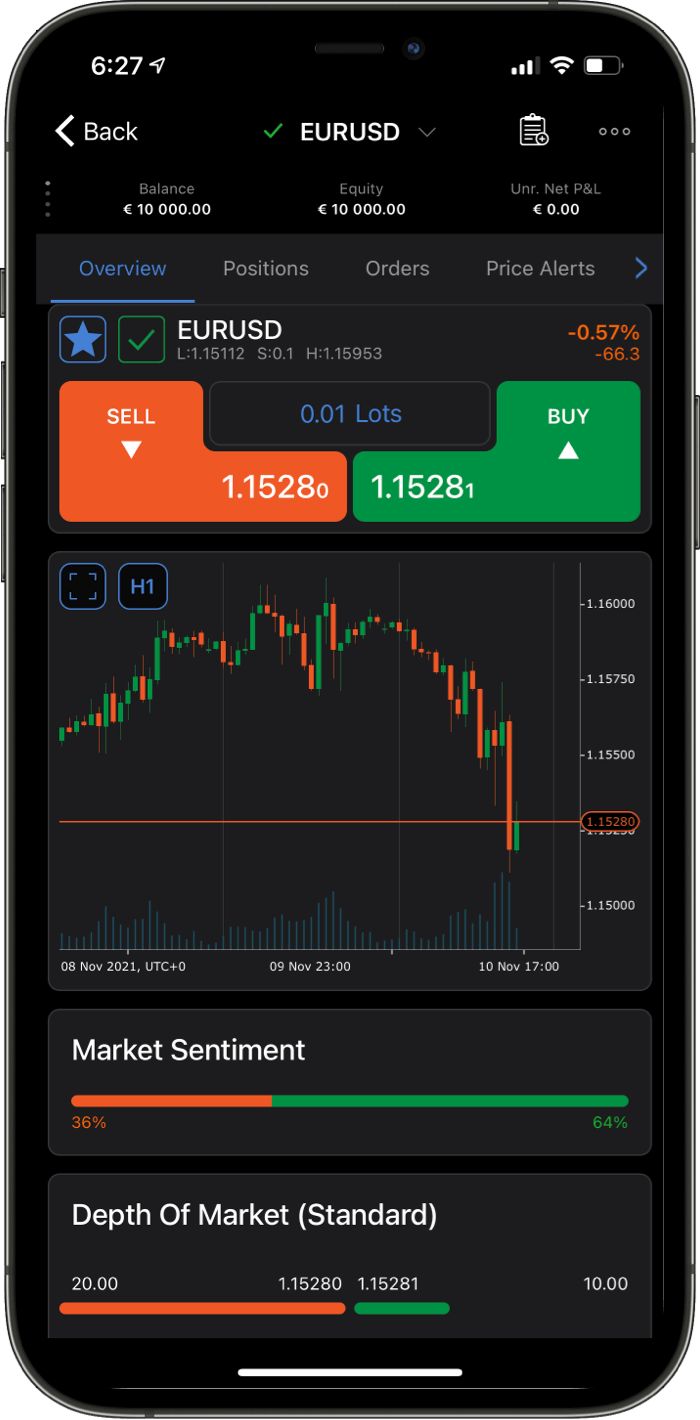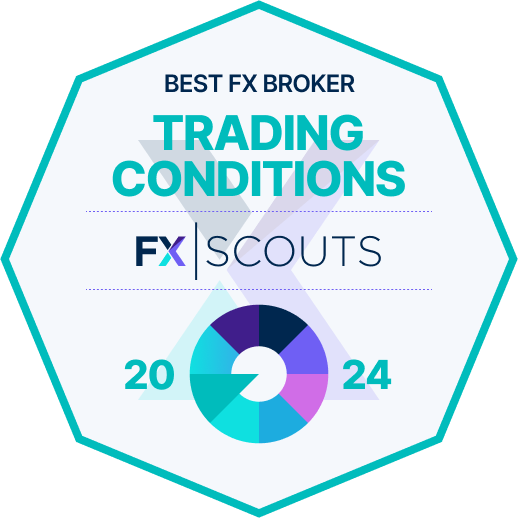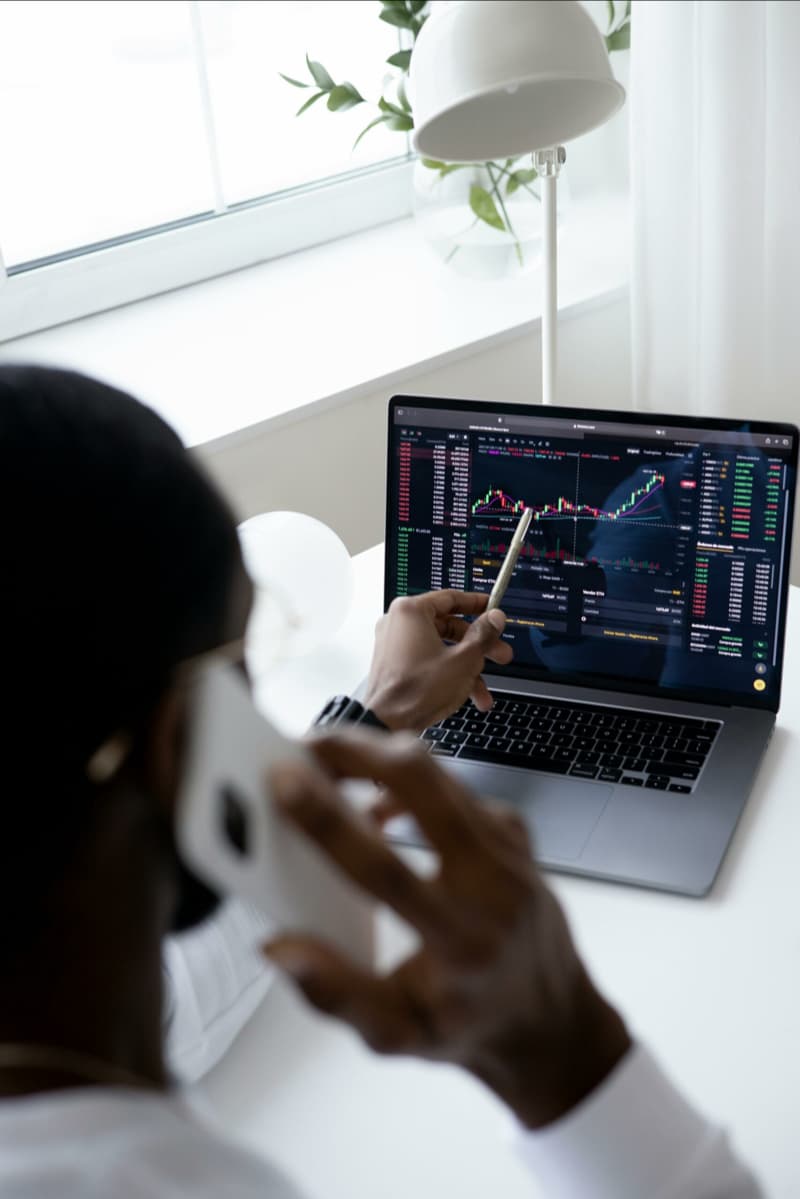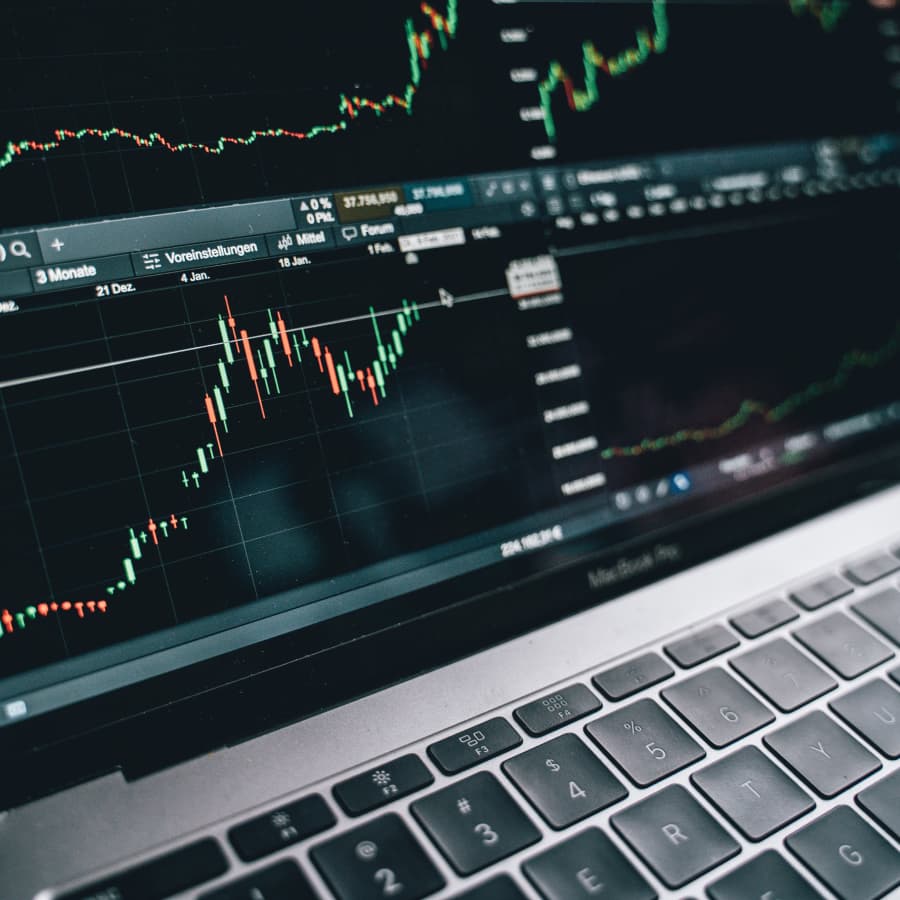Pros of Trading Stock CFDs
Convenience
A CFD is known as a derivative product, because it derives its price from an underlying instrument or product. CFDs allow you to trade the underlying asset (e.g. the Microsoft share price) without taking physical ownership of the stock.
Maximise your potential gains through leverage
Moreover, CFDs are leveraged products, so you don’t have to deposit the full value of a trade to open a position. The deposit is called your margin, and CFDs tend to come with high levels of leverage, which translates into low margin requirements. So, if your broker offers you 50:1 leverage on a US$50,000 CFD position in Microsoft, you will be required to deposit only US$1000 into your account to open the full US$50,000 contract. This means that you can gain significant exposure to Microsoft or any other stock for only a fraction of the amount you would need to buy the stock outright.
For example, imagine that a trader believes the price of ACME is about to go up. They enter into a contract with a CFD broker, agreeing to buy US$50,000 in an ACME stock CFD contract. But the broker lets the trader put up just 5 per cent of the US$50,000 overall value of the contract, or US$2500. (In this example, the broker is offering 20:1 leverage.) The price of ACME’s stock increases by 10 per cent during the day, so the overall value of the contract rises to US$55,000, giving the trader an overall profit of US$5000, or double their US$2500 outlay.
Profit from falling and rising markets
You can use CFDs to bet that the price of a stock will rise (called going “long” in the jargon) or that it will fall (a “short” position). The latter involves selling CFDs you don’t actually own and then buying them after the price falls so that you can complete the contract you made to sell them at the higher initial price.
Suppose you believe the price of ABC stock will fall. You agree to sell a US$50,000 ABC stock CFD contract in the belief that you will be able to buy it back later in the day at a lower price. Again, you do so using the 20:1 leverage offered by the broker, so your initial outlay is just US$2500. By the end of the trading day, the price of ABC has indeed fallen, and the CFD contract is now worth US$45,000. That is when you step in and buy to fulfil your earlier agreement to sell the contract at US$50,000. Again, you have made US$5000, or double your initial outlay.
Moreover, there are no limits on using CFDs to short financial instruments. By contrast, some markets in particular instruments have rules that prohibit shorting or require the trader to borrow the instrument before selling short, or have different margin requirements for short and long positions, making it difficult to balance positions.
Flexibility
You can close a position at any time during the trading day. This means that you can hold a position for as long as you want, be it seconds, minutes or hours. You can even hold a position overnight, although there will be a charge for doing so.
Moreover, many brokers offer a variety of options when it comes to trade size, allowing a wide range of traders to access the market. This includes beginners and casual traders seeking to experiment with investment strategies while limiting their risk by focusing on small trades.
Ability to hedge
Most people are familiar with the term “hedging your bets” and understand that it involves offsetting risks. Well, it means exactly the same thing in the financial world and is derived from the age-old idea of using a hedge – or fence – as a means of protection. In this instance, you can use CFDs as a way of offsetting your trading positions with balancing trades in case your beliefs about whether those initial positions are likely to rise or fall prove wrong.
CFDs are ideal hedging tools because you can use them to bet that an instrument will rise or fall at a relatively low cost. So, you can take a long position in ABC stock that will profit should the price rise, while taking out a short position that will prove profitable should the price fall. In other words, instead of selling ABC stock at a loss should your expectation of the price moving higher prove wrong (and draining your limited financial resources in the process), you can open an additional short position that will generate earnings to help offset any losses from your initial position.
You can also use CFDs to insure against a rise or fall in any investment you have other than CFDs. Suppose, for example, you have a standard portfolio of shares in global equities that you wish to keep invested for the long term. Now imagine you anticipate that global equities will soon encounter turbulence and fall sharply before correcting. You could sell all the shares in your portfolio in the belief that you’ll be able to buy them back at a much lower price. But that could prove costly in terms of transaction expenses and taxes, and it is risky: global equities might rise sharply and you might not then be able to buy them back at a lower cost.
Alternatively, an investor fearing a market correction could short-sell an equivalent amount of CFDs in the same shares, enabling them to take advantage of the short-term downtrend. At the same time, the investor continues to hold the shares within the investment portfolio in the belief that they will thrive in the long term.
Cons of Trading Stock CFDs
Commitment
Stock trading requires a considerable commitment. It takes time to learn how to trade profitably, and when you start to trade you may have to spend many hours per day on your computer screen following and researching what is happening in the market – and why – in preparation for your trading day. When that day is finished, you will need to analyse what happened and why your trading activities succeeded or failed, so that you can apply the lessons learnt to the next day’s trading. There could be days when you lose money and it is easy to become disheartened. There is certainly no guarantee of success.
Stock trading can also be risky. You may lose money or you may simply find that it is not something you like or have the temperament for. You have to be patient, for example, when waiting for opportunities to arise, and the market can experience bouts of extreme volatility that you may find highly stressful.
Leverage
Leverage is a double-edged sword. Suppose, using the earlier example, you agree to buy US$50,000 in a stock CFD contract, and the broker lets you put up just 5 per cent of the overall contract value, or US$2500. However, this time the share price falls by 10 per cent, so the overall value of the contract drops to US$45,000. Now you have turned your US$2500 outlay into a whopping US$5000 loss.
Moreover, if the capital in your account falls below a certain level, you may be subject to a “margin call”, where the broker asks you to put up additional funds to balance the account. If you fail to do so, the broker may close your positions, so crystallising your losses.
You can protect against potential losses to a certain degree. Brokers such as CMC Markets, for example, incorporate negative-balance protection into retail accounts, so your losses will be limited to the value of the funds in your account.
Constant monitoring
You need to be alert to changes in your position at all times. Market volatility and rapid changes in price – which could arise outside normal business hours if you are trading international markets – can cause the balance of your account to change quickly. If you do not have sufficient funds in your account to cover these situations, your positions will be automatically closed.
Market volatility and gapping
Financial markets can be very volatile and the prices of financial instruments can rise or fall precipitately at times, jumping to a much lower or higher price rather than moving gradually. This is called gapping and it can have a significant impact on traders.
For example, traders may use stop-loss orders to limit losses. This involves specifying a price at which your position closes out if an instrument’s price goes against you. When gapping occurs, however, those stop-loss orders may be executed at unfavourable prices – either higher or lower than you may have anticipated, depending on the direction of your trade.
It is easy to take on too much risk
Because the cost of trading equity CFDs is low, due to leverage, it is easy for investors to be lulled into a false sense of security and take on more trades than is prudent. This can leave them overexposed to the markets at any given time, such that their remaining capital would be insufficient to cover losses across the portfolio. If multiple positions go wrong, it can spell financial ruin for those who adopt a less than cautious approach to CFD trading.
Equity Trading Fees
There are a number of fees and costs associated with trading stock CFDs. As explained earlier, when you open a CFD trade you must pay a portion of its full value up front. This deposit is called the margin, and the percentage you have to pay on the overall value of the trade will affect the affordability of your trading.
Commission and spread
The costs of CFD trading include the commission charged by the broker and the spread, i.e. the difference between the bid and offer prices at the time you trade.
A commission (normally around 0.10 per cent) is charged when you buy or sell a CFD on shares. The commission charge varies depending on the country where the share product originates.
However, commissions are not charged on other products, such as CFDs on foreign currency, indices, cryptocurrencies, commodities (e.g. gold) and treasury instruments.
The spread is the way the broker earns money when dealing in non-share CFDs. It is simply the difference between the price at which you can buy a CFD and the price at which you can sell that same CFD at the same moment. The price at which you buy (bid price) is always higher than the price at which you sell (ask price), and the underlying market price will generally be in the middle of these two prices. Trading spreads add costs to a trade and will fluctuate along with an asset’s price and trading volume.
Financing charge
If you hold a long position, you will also be charged interest to hold that position overnight. This is referred to as a financing charge and is calculated as the current overnight interest rate charged by the major banks plus 2 to 3 per cent. If you hold a short position overnight, you will receive a payment of the current overnight interest rate minus 2 to 3 per cent.
For example, the broker IG says that for long positions it charges 2.5 per cent above the relevant interbank rate, so if the relevant interbank 1-month rate is 0.5 per cent, you would be charged 3.0 per cent. For short positions, traders receive the relevant interbank rate minus 2.5 per cent. So, if the interbank rate is greater than 2.5 per cent, IG will credit your account. But if the interbank rate is less than 2.5 per cent, your account will be debited. As an example, if the relevant interbank 1-month rate was 0.5 per cent, you would be charged 2.0 per cent (annualised).
Weekend fees
You will be charged extra if you keep a position open over the weekend, as opposed to overnight.
Withdrawal fee
Some brokers may charge a fee to withdraw money. eToro, for example, says that it charges US$5 for withdrawals “to cover some of the expenses involved in international money transfers”. The fee may vary depending on the currency involved. Some brokers may offer a set number of free withdrawals per month.
Conversion fees
Some brokers will charge a fee to convert one currency into another. eToro gives an example of around a US$10 cost to convert a deposit of £2000 into US dollars.
Inactivity fee
A fee may be charged if an account goes unused for a set period. One broker, for example, charges a US$10 monthly inactivity fee on any remaining available balance if there has been no login activity for more than 12 months.
Equity Trading Strategies
News trading
This strategy involves trading based on news and market expectations, both before and following news releases. You will have to act quickly and be able to make a quick judgement on how to trade a new announcement or piece of data. You will also have to be able to judge whether the news is already factored into the stock price and whether the news matches investor expectations.
The advantage of this strategy is that corporate economic and political news happens all the time, so there are always possible trading opportunities. The disadvantage is that you need considerable expertise in how markets operate and how to interpret data and news.
End-of-day trading
According to the broker CMC Markets, this style of trading requires less time commitment than other trading strategies because there is only a need to study charts at their opening and closing times.
End-of-day trading involves buying or selling near the close of the market, when it becomes clear that the price is going to “settle”. The strategy focuses on studying the current day’s price compared with the previous day’s price movements, and using that as a guide to how the market is likely to move. Traders can use various tools to limit their overnight risk, such as setting a take-profit order or a stop-loss limit.
Technical analysis
Some traders believe that prices for stocks (and other financial instruments) move in particular patterns. They rely on indicators to determine when a trend is taking hold and then trade on the basis that that trend will continue.
Technical-analysis traders begin by seeking to understand where the price is heading according to the fundamentals of supply and demand. (For example, if we are in a period of rising interest rates, the price of stocks, in general, will probably fall, since those higher borrowing costs will cool economic activity.) They then use charts that detail previous highs and lows, trend lines and patterns.
When the price of a stock is rising, a significant previous high above the current level will be an obvious target, as will an important previous low when the price is falling. Also, in an uptrend, a line on the chart connecting previous highs will act as resistance when above the current level, while a line connecting previous lows will act as support – with the reverse true in a falling market.
Swing trading
Swing trading is a style of trading that focuses on short-term trends in a stock (or other financial instruments) over a period of a few days to several weeks. Swing traders rely on technical analysis to find trading opportunities and then focus on taking small gains and cutting their losses quickly. If this is done consistently over time, relatively small gains can compound into excellent annual returns.
Swing traders should focus on the most actively traded stocks that show a tendency to swing within broad, well-defined limits. It’s a good idea to focus on a select group of stocks and ETFs, and monitor them daily, so that you understand the price action they generally exhibit.
According to the investment broker Fidelity, there are a number of ways to capitalise on market swings. The company says that some traders opt to trade after the market has confirmed a change of direction, and trade with the developing momentum. But others, it adds, may “choose to enter the market on the long side after the market has dropped to the lower band of its price channel—in other words, buying short-term weakness and selling short-term strength”. Both approaches, says Fidelity, can be profitable if implemented with skill and discipline over time.
Momentum trading
This strategy can be deployed across a range of financial instruments, including stocks. According to CMC Markets, it is a strategy that is very popular with short-term traders. It runs counter to the old stock-market adage that you should “buy low and sell high”, focusing instead on buying high and selling even higher.
Momentum trading focuses on price action and price movements, seeking to capitalise on a new directional trend, rather than fundamental factors such as company results or economic growth. For example, if a stock suddenly surges upwards after the company announces unexpectedly strong profit growth, a momentum trader might try to buy shares and ride the stock’s price higher.
Equity Trading Tips
Traders can make consistent profits from trading stocks, but preparation is key. Follow these tips and you will maximise your chances of trading equities successfully.
Use a demo account
All good brokers offer demo accounts where you can practise trading using virtual money. You can learn how the market works, how to place buy and sell orders, and how to deploy strategies, etc. at no risk to yourself. Do this for as long as you can. If you are consistently making a profit, it might be time to sign up for a real account.
Educate yourself
Good brokers offer lots of educational material on their platforms. There is also much material on the internet – including videos and examples of trades – that can help you learn all you need to know to trade successfully.
Don’t get emotional
Trading can be very stressful. Using a demo account can help you to decide whether the stress of losing money is for you or not. It is important to keep your cool when the market turns against you and know when to exit a position and accept your losses.





